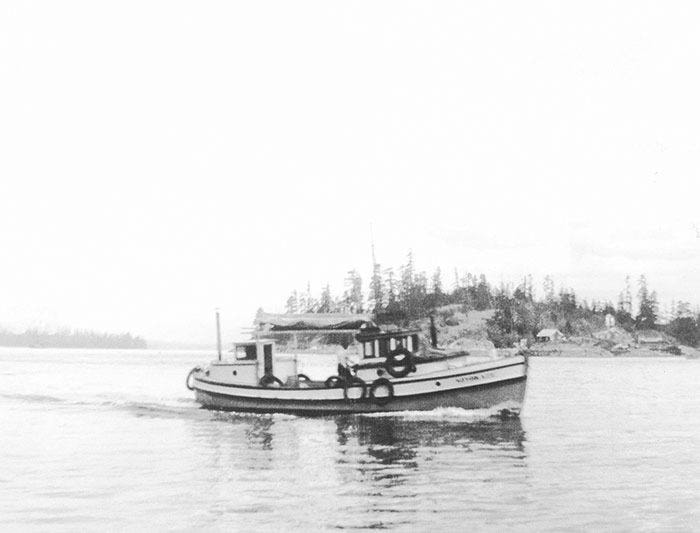War stories are often told on Remembrance Day, but they are not always about heroes or significant battles.
A war story can take place where no battles are fought, as on Canada’s west coast where the Canadian military was preparing for a possible attack from Japan just prior to World War II. As a result of this fear and the attack on Pearl Harbor in December 1941, hundreds of Japanese Canadians were interred in camps in the belief that they posed a threat to Canada’s security, and their possessions were taken from them.
One such story is right in our own backyard. On display at the Museum at Campbell River is an artifact whose story is significant, because it speaks of war time hardship and how a family ended a tale of loss with a happy event. The artifact is the Soyokaze, (Gentle Wind) a 36 foot double ended cod fishing boat built at the Kishi Boatworks in Steveston in 1939, that belonged to Japanese Canadian fisherman Shigekazu Matsunaga.

Shigekazu Matsunaga.
Shigekazu was born in 1908 in Mio Wakayama, Japan and came to settle at Quathiaski Cove on Quadra Island. From the late 1920s to 1941, he fished in the waters off Quadra Island and Campbell River. In 1941, his fishing career didn’t end because he wished it to; he, along with his family, was interred in a camp in Bridge River, B.C. The Matsunaga family lost all their possessions, including the beloved fishing boat, which along with 1,200 other Japanese fishing boats was confiscated. Many were sold as ‘enemy property’ to non-Japanese fishermen. The Soyokaze was purchased and renamed the North Star II.
When the Matsunaga family returned to the Campbell River area in 1949, Shigekazu purchased new boats and resumed fishing. Eight years later, after much searching, he found the Soyokaze in its new guise. Fortunately, the new owners were willing to sell it back to Shigekazu, since they knew he had been the boat’s original owner.
It is believed that the Matsunagas are the only Japanese Canadians to have found and repurchased their original fishing boat. Shigekazu considered it to be his ‘lucky boat’. After 1957, the aft cabin was removed to accommodate a gillnet drum so the boat could be used in both gillnet and cod fisheries. At the time, the waters off Cape Mudge supported a particularly rich ling cod fishery with record catches of 2,700 lbs. in a single day. Shigekazu fished with it until the cod fishery closed in 1980 due to declining stocks. He passed away in 1995 at the age of 87.
His family maintained the boat, and it was Shigekazu’s wish that upon the boat’s retirement it should be donated to the museum. His wife, Toshiko, their five sons and daughter were all at the dock to see the boat up on the ways in 1999 for the beginning of its restoration. Shigekazu’s eldest son Takao pulled it to the ways, skippering the Miss Quadra, a boat that had been given to him by his father and that was part of the Matsunaga family’s fishing fleet. Before the historic vessel left its berth the name plate North Star II was removed to uncover the carved letters of the name Soyokaze underneath.
Quadra Island carpenters George Murdock and John Jordan worked on the restoration in a space donated by Ocean Pacific. The restoration, which was part of the Campbell River community’s Millennium Project, was completed in 2003, and since that time the Soyokaze has been sitting proudly in its berth adjacent to the museum building.
